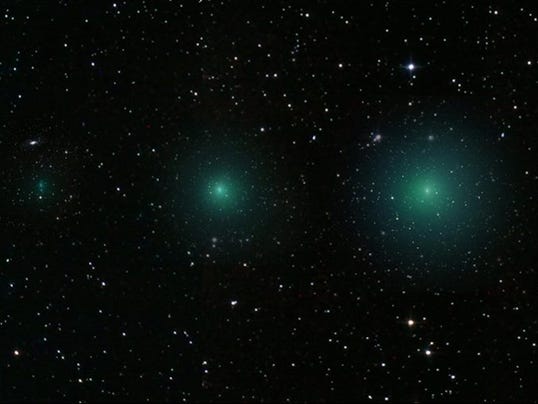One comet to swerve closer to Earth than any other comet in centuries
Traci Watson, Special to USA TODAY

An emerald-green comet will brush the Earth Monday, followed one day later by a kissing cousin that will swerve closer to the planet than any other comet in nearly 250 years.
The first and bigger of the two comets will be visible Monday to the naked eye in the southern hemisphere, as long as city lights are far away. Stargazers in the United States will probably need only binoculars to see the bigger comet in late March. Scientists, however, are bringing out the big guns. The Hubble Space Telescope, the powerful ground-based Gemini telescopes and others will be trained on the celestial visitors, which will provide an extraordinary close-up of objects usually glimpsed only at a distance.
“This is one for the record books,” says Michael Kelley of the University of Maryland, who’s never heard of two comets approaching close to Earth a day apart. “It’s a fantastic opportunity for professionals to learn more about comets, and if you have a chance to try to find them … it’s a fantastic chance to see part of history as it happens.”
The first member of the pair, known as comet 252P/LINEAR, is a bright green color from the carbon gas it’s puffing out, says the University of Maryland’s Matthew Knight. 252P will slide past Earth at a distance of roughly 3 million miles. That’s well beyond the moon but near enough to put 252P in the top 10 of closest-approaching comets.
